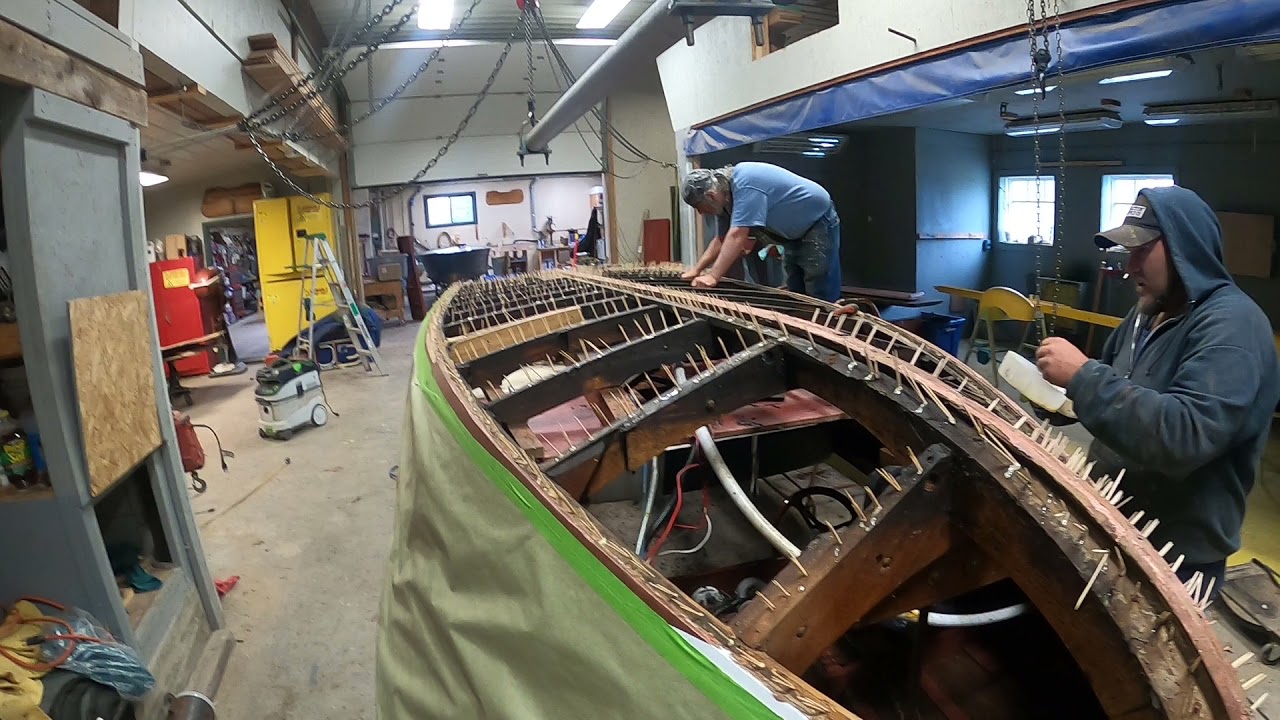Yes, it is Memorial Day, but we have a boat needing a new bottom, so have dropped all else to make some real progress, but also to discover what is or is not lurking beneath that plywood. Our 1959 Chris-Craft Ski Boat must get back to her owner ASAP, so we are on task.
The good news is that, save fore one of them, her frames are sound; yes, grease-sodden, but solid. Joe was able to sister the one port side forward frame that had broken.
We will not attempt applying bilge paint to the frames as the grease and oil has penetrated to the point it would not adhere. We will scrape and then sand all of the plywood inner skin landings on the frames.
Remember my endless comments about how these venerable ladies keep secrets beneath their skirts? Well, this lady’s secret is that what we have been removing is anything but her original bottom. Indeed, independent of what the owner was told then, whoever is the villain of this piece should be dragged and quartered.
Why? Just imagine using 3/8” A/C construction plywood for the bottom of a wood boat! It has delaminated everywhere. Once again, thank the Lord that she and her owner did not find the bottom!
At this point we are “porcupining,” which involves filling every empty screw hole with three to four hardwood toothpicks and waterproof Gorilla glue. Once all of them have been inserted, Joe and Rick will spray the bottom lightly with water. Doing so accelerates curing while strengthening the bond formed between the oak frames and hardwood toothpicks.
Remember, you can access all the materials we use and their sources by navigating to our Materials and Sources page.
Next, we will use our Fein MultiMaster tools to skim off the toothpicks, at which time the landings will be ruthlessly scraped, sanded and treated with three full coats of Smith’s – and only Smith’s Clear Penetrating Epoxy Sealer.
Following will be fitting the Meranti Aquatek Marine plywood bottom panels, sealing them with CPES and applying three coats of Sandusky Paint Company Chris-Craft Mahogany Bilge Paint.
None of the bottom planks, several of which just might be other than mahogany, can be saved. While the 5200 in which the plywood panels are bedded cures, we will be using the released planks as patterns and then sending them to the transfer station for recycling.
As always, you can delve much, much deeper into the what and how of a True 5200 Bottom by navigating to our True 5200 Bottom page.
She will be roaring across her home lake well before our promised July 4 delivery.

